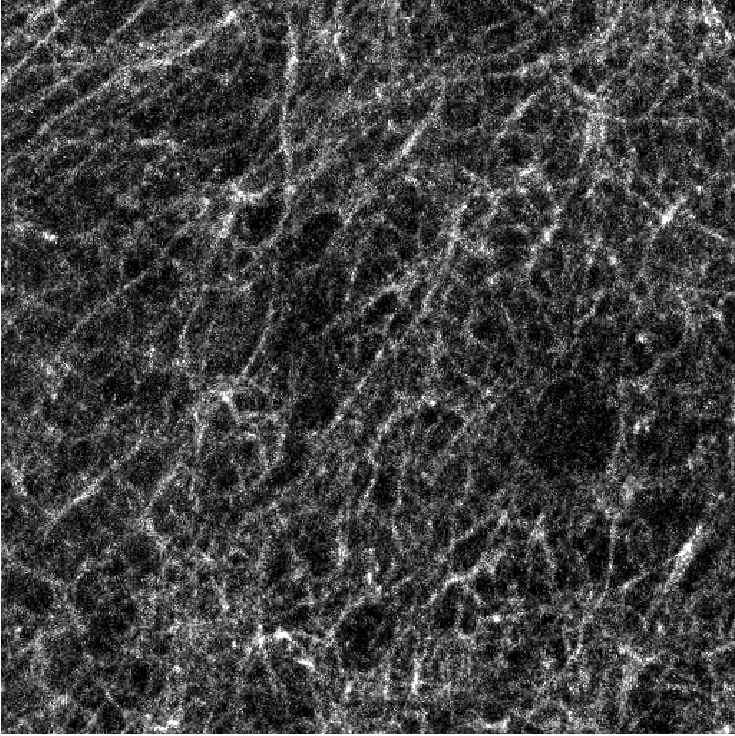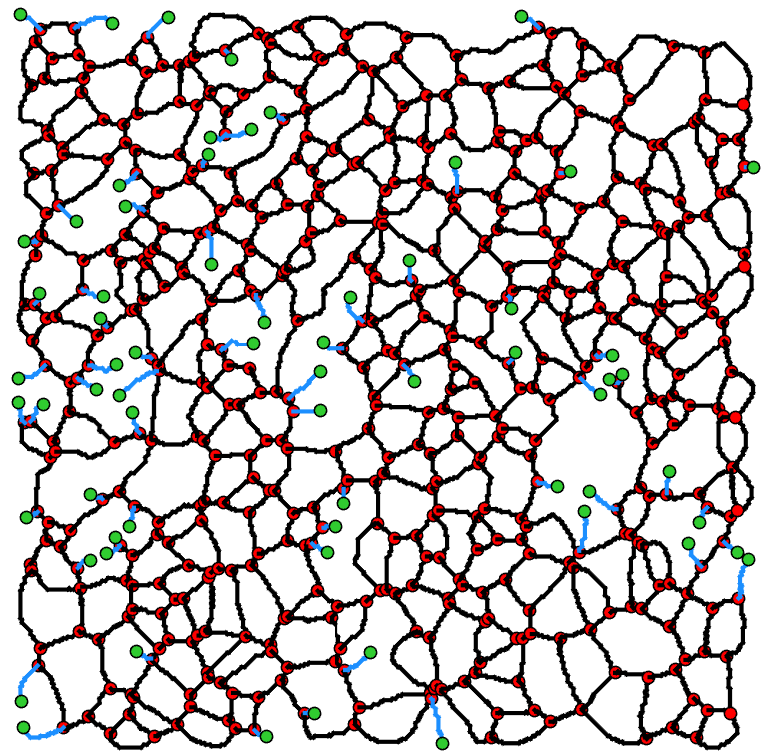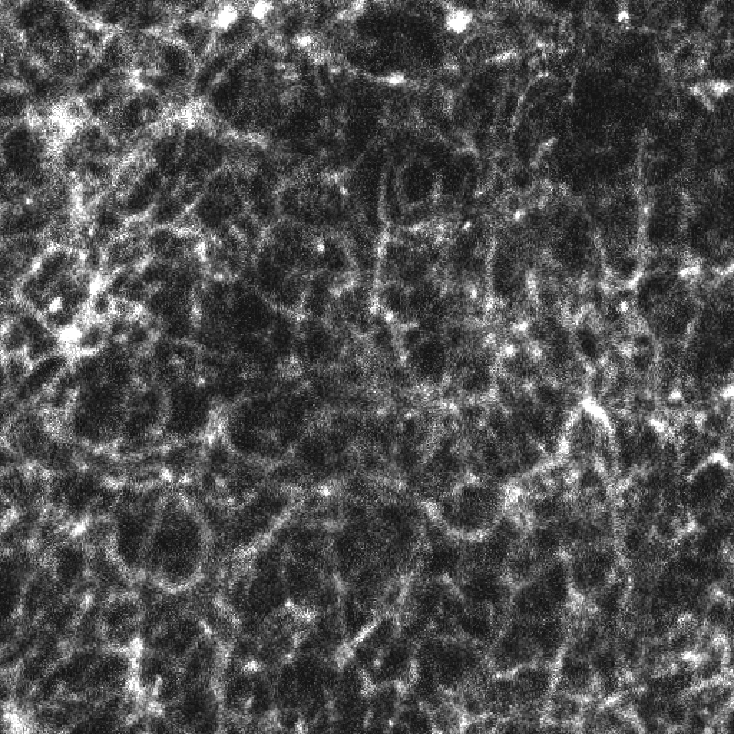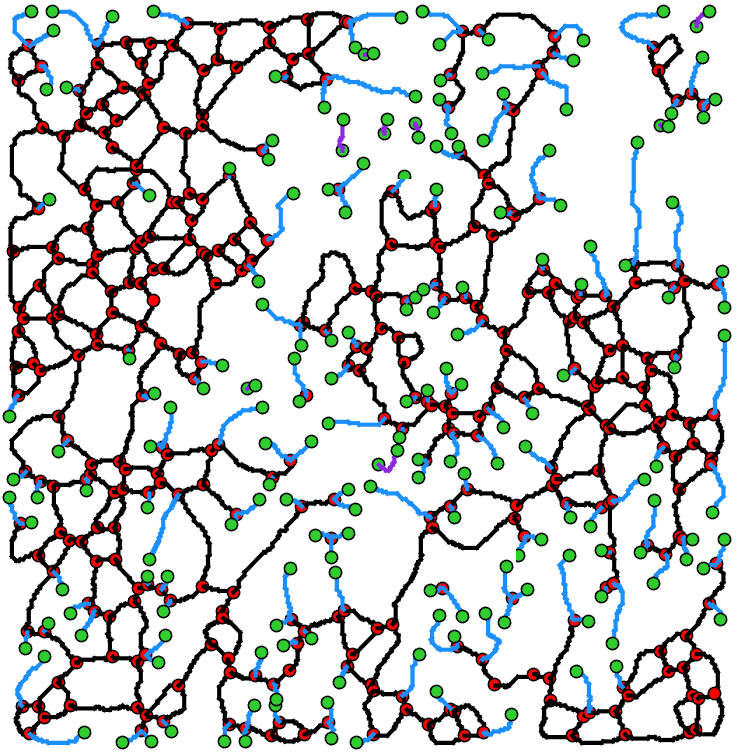Section: New Results
Classification and Modeling of the Fibronectin Network in Extracellular Matrices
Participants : Anca-Ioana Grapa, Laure Blanc-Féraud, Xavier Descombes, Sébastien Schaub.
This work is done in collaboration with Ellen Van Obberghen-Schilling and Georgios Efthymiou (iBV).
We are interested in the numerical analysis and modeling of the Fibronectin (FN) network, a major extracellular matrix (ECM) molecule expressed in pathological states (fibrosis, cancer, etc). Our goal is to develop numerical quantitative biomarkers that describe the organization of the different FN networks from 2D confocal miscroscopy images (Figure 5).
|
In a previous work, we have derived a pipeline to classify a given tissue among the four FN variants (cell-derived matrices), based on a decomposition into discrete fast curvelet transform coefficients. We ensured the invariance to rotation of the coefficients and then fed them to a DAG-SVM multiclassifier, in order to prove their discriminative ability in the context of classification of the four FN variants. The results were published in [7].
The second step of our work consists in setting up the modeling of the FN networks starting from a graph-based representation, built on top of Gabor features (fiber scale, orientation, etc). More specifically, Gabor filters are used to enhance the fibrillar structures, followed by a morphological skeletonization of the maximum response of the Gabor filter set. We then derive the corresponding graph networks that generate relevant fiber geometry statistics (e.g fiber length, node degree, node density, etc).
Starting from the graph networks, we manage to reconnect the missing fibers in the skeleton, that are due to previous morphological operations. To do so, we use the Gabor maximum response as a guideline for reconnection, and connect the fibers within a predefined cone sector around the local fiber orientation. The graph parameters corresponding to the improved skeletonizations of the four FN variants, are then classified by a DAG-SVM. It is thus shown that graph features can discriminate among the FN variants.
The next step concerns the development of a metric between graph networks that takes into account their topology, to provide a meaningful distance between them. We currently investigate methods based on optimal transport, that are able to compare discrete probability distributions and respect the local geometry. The techniques that rely on graph structures to compute a geodesic distance (e.g. Gromov-Wasserstein) and/or barycenter of structured data (e.g. mesh structures) [16], serve as inspiration for our work. The distance is obtained following a minimization of the cost of transport of the mass from one distribution to the other. Despite the fact that they consider the intrinsic distance within each space (i.e graphs) in the cost formulation, these methods don't explicitly take into account the graph structure defined by the adjacency matrices. To counteract some of the shortcomings, we consider parallel graph-matching methods and redefine our problem in a many-to-many graph matching context, where the distance between the graphs is given by the optimal alignment of their structure determined by the mapping between the vertices [21].
Finally, we analyze the advantages and drawbacks of the two techniques both for small-size graphs as well as for FN graphs to derive an appropriate formulation of the distance among them, which will be useful to compare the FN fiber networks.






